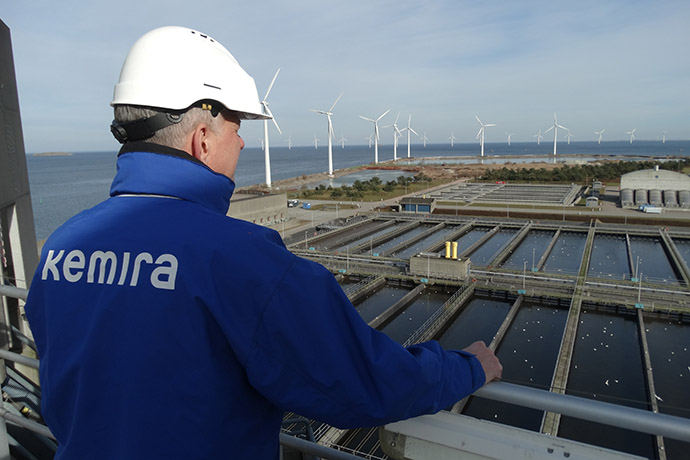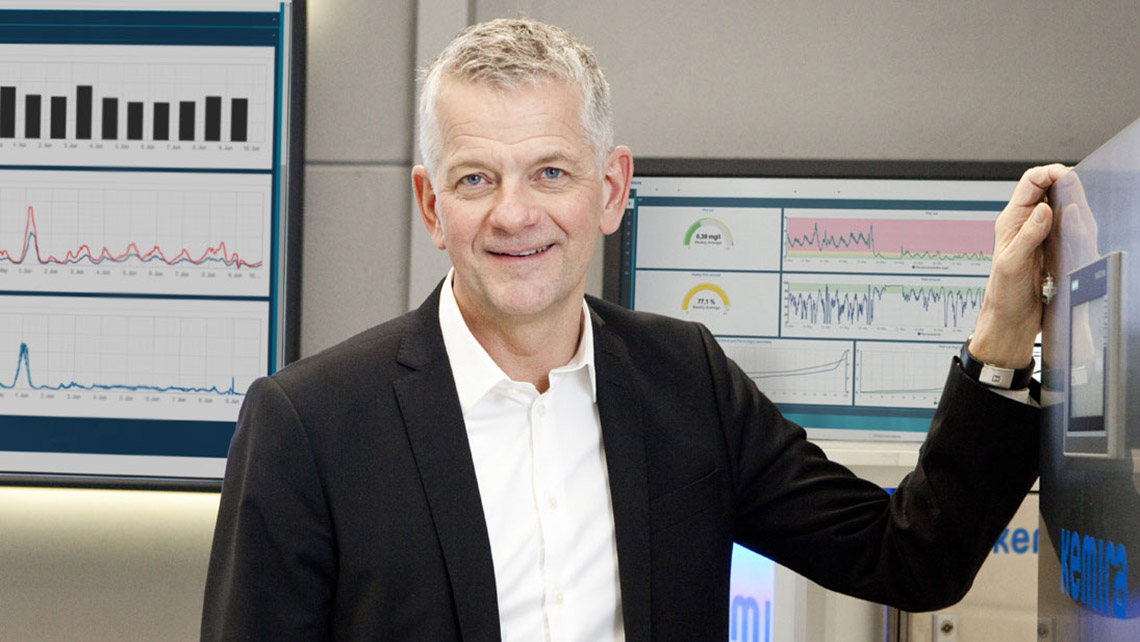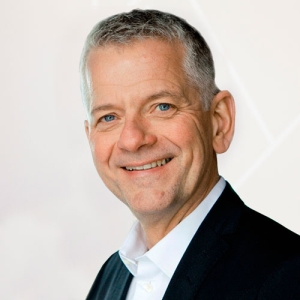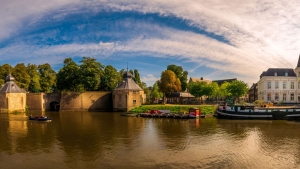Jesper Berner, Kemira sales manager for Advanced Water Treatment, has helped plant managers at wastewater treatment plants (WWTPs) of all sizes achieve their sustainable targets. His approach? Making the most of the data that’s already at their fingertips.
“Municipalities everywhere are looking for ways to reduce their carbon footprint and minimize their environmental impact. Utilities like wastewater treatment plants often play an essential role,” he explains.
“Reducing the amount of energy needed in the water treatment process, as well as optimizing chemical use, are two ways that WWTPs are contributing to their local and national environmental targets, and the United Nations Sustainable Development Goals (UN SDGs),” says Jesper.
In this article, we look at how Jesper has helped plant managers “hack” their way to sustainability gains with digital services that optimize primary treatment, sludge dewatering and phosphorous precipitation. Using examples from Copenhagen, Prague and Breda, we highlight a few ways to achieve environmental benefits by finetuning and automating chemistry for wastewater treatment.
Using less energy
The most energy intensive part of wastewater treatment is the biological process. One way to tackle that problem is to feed the bacteria less by increasing the primary treatment load through digitally-enabled optimization.
“Settling more primary solids in the primary treatment step reduces the load for the aeration process. That lowers overall energy consumption,” Jesper explains. Leaving the easily degradable COD for biology can also increase biogas production.
A smart platform like Kemira KemConnect™ PT automates and optimizes chemical pre-treatment. Designed to work with a plant’s existing sensors and monitoring system, it includes Kemira’s high-performance chemistry, online equipment, recommendations for optimal dosage points, and a customized reporting system. With a solution like KemConnect™ PT, plant operators can continuously monitor all relevant performance parameters – as well as cost savings – in real time.
“For WWTPs that don’t already have sensors and analyzers in place, there is a plug and play unit that we can lend so plant operators can experience first-hand the benefits of advanced water treatment. It’s typically a two-month showcase,” Jesper explains. Kemira doesn’t sell hardware like sensors, but consults on optimal placement of sensors and analyzers, as well as where and how to dose the chemistry. The idea is to help ensure that our customers have a robust data set to feed into a solution like KemConnect™ PT.
Squeezing efficiencies from sludge dewatering
Sludge dewatering is another area where WWTPs can often improve performance. Sludge is notoriously difficult to dewater, handle and dispose. But Kemira’s deep chemistry expertise and digital solutions have helped many municipalities optimize this process and reduce energy use.

Kemira sales manager Jesper Berner overlooking the Lynetten wastewater treatment plant in Copenhagen, Denmark.
For example, the Danish utility BIOFOS, which serves Copenhagen and the surrounding municipalities, recently reduced the energy consumption of their sludge treatment process by almost 4.5 MW. Working closely with Kemira, the BIOFOS team selected Superfloc XD-5500, our new high-performance sludge dewatering polymer. They also implemented KemConnect™ SD, our advanced water treatment platform for sludge dewatering. The powerful combination of chemistry, data analytics and automated dosing optimizes chemical sludge treatment prior to dewatering – also in highly variable conditions.
Now we know what’s happening 24 hours a day. There are good dashboards, accurate reports, it’s reliable and we feel in control. Kemira helped us stabilize the process.
WWTPs that implement KemConnect™ SD achieve additional energy savings from reduced suspended solids in the centrate, as well as drier sludge, which results in lower sludge hauling and disposal costs. That has been the case with the Dutch city of Breda at a WWTP called Rwzi Nieuwveer. The plant was struggling with sludge dewatering because of unreliable data. A renovation in 2012 left the facility with faulty sensors and automation. In fact, they were forced to resort to manual dosing instead.
Having used Kemira’s polymers for years, the team at Rwzi Nieuwveer trusted us to help them select new, higher-quality technologies and implement our solution, KemConnect™ SD.
Rwzi Nieuwveer process technology expert, Hans Mollen, said, “Now we know what’s happening 24 hours a day. There are good dashboards, accurate reports, it’s reliable and we feel in control. Kemira helped us stabilize the process.”
Since implementing our smart solutions, Rwzi Nieuwveer’s dry solids have gone from about 20% to 21%. Over time, drier sludge will lead to lower disposal costs and a reduced carbon footprint. Polymer use was also reduced by about 19%, a win for responsible consumption and production (SDG12).
Reducing load to ecosystems
One important lesson that water treatment professionals are learning as they face more stringent environmental key performance indicators is that working toward one KPI can sometimes jeopardize another. For instance, this is often the case with phosphorus precipitation and energy consumption.
How can we be sure to protect aquatic ecosystems and reduce energy consumption at the same time?
WWTPs must remove phosphorous from wastewater to protect local waterways and prevent algae bloom. Biological solutions may appear attractive but, unfortunately, aren’t stable enough – especially in storm-prone areas that are facing extreme weather linked to climate change. When biological systems fail, large amounts of phosphorous can wash into local waterways leading to eutrophication. Chemical precipitation, on the other hand, is an extremely reliable solution for phosphorus precipitation. Also, it is less energy intensive.
For plant managers, the question becomes: “How can we be sure to protect aquatic ecosystems and reduce energy consumption at the same time?”
This was the dilemma facing Veolia Česká Republika in Prague. They tested various options and found an advantage with Kemira KemConnect™ P. This advanced water treatment solution brings together Kemira’s chemistry with smart technologies for automated and optimized phosphorous removal.
In a major victory for Prague, Veolia’s partnership with Kemira allowed the city to achieve a 34% reduction in phosphorous precipitation cost while maintaining compliance. “Kemira’s solution helps significantly, not only in financial terms but, more importantly, in terms of environmental compliance for discharge permits, as well as for Veolia’s own sustainability KPIs like carbon footprint,” said Milan Lánský, a Veolia technical expert.
Learn more about KemConnect™, or contact Jesper Berner, Kemira sales manager for Advanced Water Treatment. You can also register for our on-demand webinar on future-proof primary treatment below.





